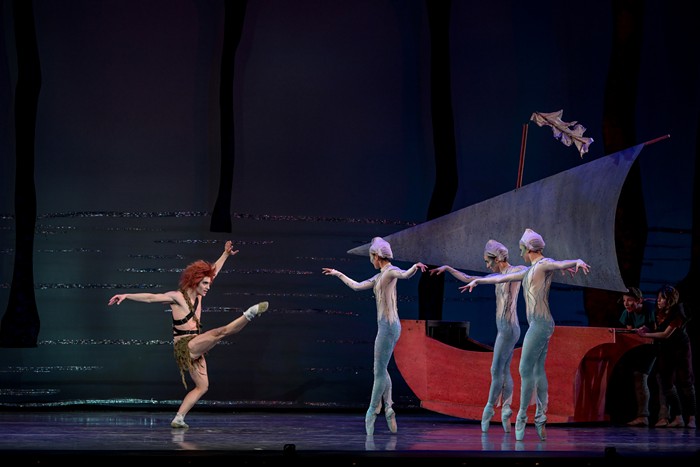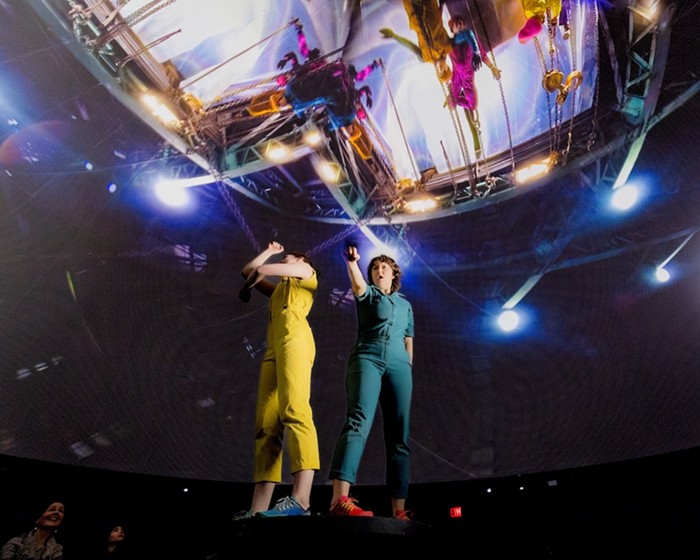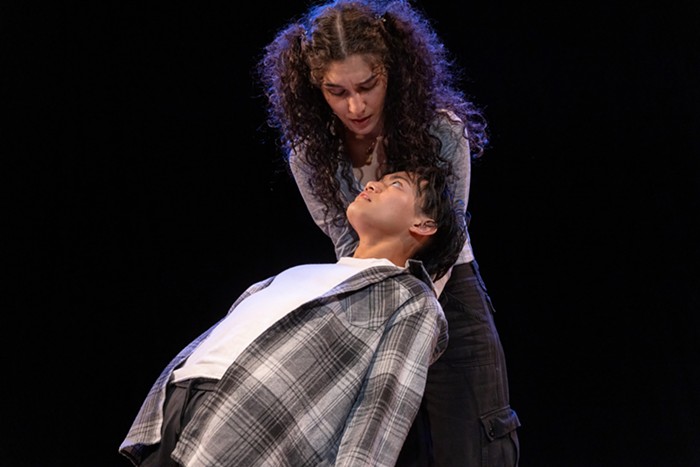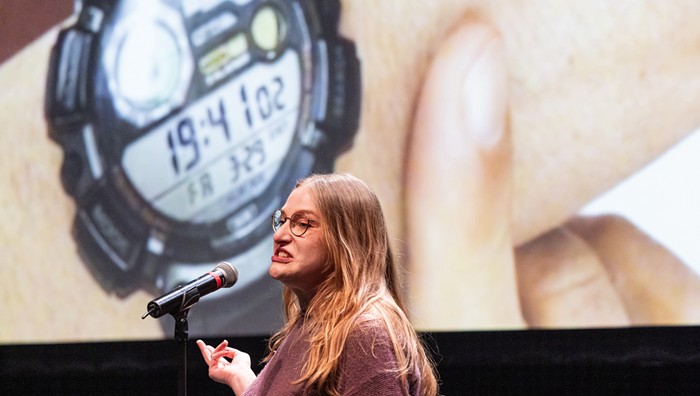
A fascinating through line from this year’s Time Based Arts Festival (TBA) is how many of the festival's artists disrupt the established gallery relationship between art and audience by soliciting attendee participation in public spaces. The work of interdisciplinary, movement-based artist Eiko Otake is no exception.
On TBA's opening afternoon, spectators gathered on the floor of the Pacific Northwest College of Art’s (PNCA) sun-struck atrium in anticipation of a performance by Otake, entitled A Body in Places. Otake appeared above us on the atrium’s third-floor, dangling a piece of crimson and beige fabric over the edge of the railing before hurling it to the upturned faces below her.
Moving with both deliberate speed and a measured slowness, Otake descended one story to the next, interacting with random objects on her way. First, she decimated an unsuspecting broad-leaved plant. Then she attacked a TBA brochure advertising her work. After that she distributed a cart of books, from the College’s Albert Solheim Library, to audience members on the main floor. Her movements through the space exercised a subtle control over the audience (including members of the press), forcing us to reposition ourselves and negotiate with one another to gain views. Eventually she exited the building, drawing the audience along, and bringing street traffic to a halt. She then escaped down the park blocks.
A Body in Places, as an installation, combines an arsenal of media. In addition to the opening night performance, the installation includes photographic prints and videos of Otake's work. Created in collaboration with the photographer and Japanese history professor, William Johnston, they depict Otake dancing a version of A Body in Places at the irradiated site of the Fukushima disaster and covered in a swarm of moths in the Kanakadea Forrest.

Otake says her aim is to draw attention to the delicate equilibrium and the growing disjunction between post-industrial society and our fragile ecosystem. In the artist statement for her debut of A Body in Places at The Metropolitan Museum of Art she explained: “I have tried to connect, through the insistence of my body, each particular place I perform with the landscape of post-nuclear disaster Fukushima.”
Going from Otake’s exhibit to Noche Libre’s DJ set at PICA’s Mainspace was a hefty transition. In the gallery surrounded by photos of Otake, I reflected on the urgency of some of the challenges the global community currently faces. When Otake tore the brochure for her TBA event apart with her teeth, she seemed to be mimicking the way people consume information and art about catastrophic events like Fukushima or climate change, while still maintaining the status-quo. On the dance floor I felt relatively untroubled and joyful—in my body instead of in my head. The contrast between Otake’s and Noche Libre’s performances gave me a deep appreciation of events like TBA, which underscore the ephemerality of our responses to art. This is a double-edged sword: on the one hand, it enables us to take in and then ignore the information we receive from a work like A Body in Places. On the other hand, it enables us to keep dancing (even if it’s the end of the world and we know it).
Otake will perform The Duet Project: Distance is Malleable at PICA on Thurs Sept 12 -Sept 14 at 8:30pm. An installation of A Body in Places is on display at the Center for Contemporary Art & Culture at PNCA through Thursday, October 24th.
We're all over this year's TBA! Keep up with us for reviews and critical impressions at: portlandmercury.com/tba


















